Download the full report - Human Rights Watch
Download the full report - Human Rights Watch
Download the full report - Human Rights Watch
Create successful ePaper yourself
Turn your PDF publications into a flip-book with our unique Google optimized e-Paper software.
I. Background<br />
The 26-year-long armed conflict in Sri Lanka ended on May 19, 2009, with <strong>the</strong> defeat of <strong>the</strong><br />
secessionist Liberation Tigers of Tamil Eelam (LTTE). During <strong>the</strong> last months of <strong>the</strong> fighting,<br />
<strong>the</strong> Sri Lankan armed forces and <strong>the</strong> LTTE repeatedly violated <strong>the</strong> laws of war, causing<br />
unnecessary civilian casualties and suffering.<br />
The Armed Conflict<br />
In July 1983, members of <strong>the</strong> LTTE ambushed a Sri Lankan military convoy in Jaffna,<br />
sparking anti-Tamil riots in Colombo during which several hundred Tamils were killed. The<br />
incident referred to as “Black July,” marked <strong>the</strong> beginning of <strong>the</strong> nearly three-decade<br />
armed conflict between <strong>the</strong> government and <strong>the</strong> LTTE, which sought to create an<br />
independent Tamil state, Tamil Eelam.<br />
The first two decades of <strong>the</strong> conflict were interspersed with large-scale military operations<br />
and short-lived ceasefires. In February 2002, <strong>the</strong> Sri Lankan government and <strong>the</strong> LTTE<br />
signed a ceasefire mediated by <strong>the</strong> Norwegian government that brought a temporary lull in<br />
fighting, but human rights abuses persisted. The Nordic-led Sri Lanka Monitoring Mission,<br />
established to monitor compliance with <strong>the</strong> Ceasefire Agreement, 5 <strong>report</strong>ed over 4,000<br />
violations of <strong>the</strong> agreement from February 2002 until December 2006. The LTTE was<br />
significantly weakened when its forces in <strong>the</strong> east under Vinayagamoorthy Muralitharan,<br />
known as Colonel Karuna, defected in 1994 to <strong>the</strong> government side.<br />
The LTTE launched a series of attacks on <strong>the</strong> police and army in <strong>the</strong> north and east, carried<br />
out suicide bombings on ethnic Sinhalese civilians in <strong>the</strong> south, and stepped up forcible<br />
recruitment of children and adults and o<strong>the</strong>r abuses in areas under <strong>the</strong>ir control.<br />
Government security forces quietly unleashed a counterinsurgency campaign against<br />
suspected LTTE members and supporters, and subjected hundreds of Tamils to arbitrary<br />
5<br />
The Agreement on a Ceasefire between <strong>the</strong> Government of <strong>the</strong> Democratic Socialist Republic of Sri Lanka and<br />
<strong>the</strong> Liberation Tigers of Tamil Eelam, signed on February 21, 2002, had <strong>the</strong> stated objective to “find a<br />
negotiated solution to <strong>the</strong> ongoing ethnic conflict in Sri Lanka.” The agreement set up modalities of <strong>the</strong><br />
ceasefire, measures to restore normalcy, and <strong>the</strong> Sri Lanka Monitoring Mission.<br />
“WE WILL TEACH YOU A LESSON” 12



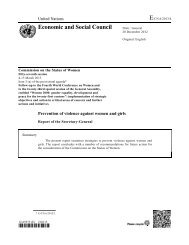
![IANSA [PDF, 2MB] - PeaceWomen](https://img.yumpu.com/25206379/1/190x123/iansa-pdf-2mb-peacewomen.jpg?quality=85)
![Commitments Sample [PDF, 93KB] - PeaceWomen](https://img.yumpu.com/25206331/1/190x245/commitments-sample-pdf-93kb-peacewomen.jpg?quality=85)


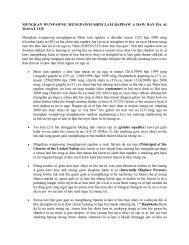
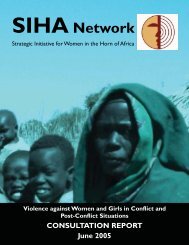
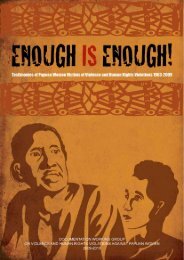


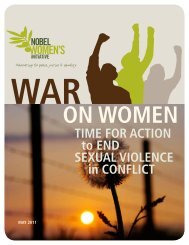
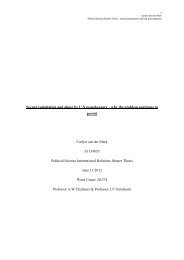

![A Toolkit for Advocacy and Action [PDF, 260KB] - Peace Women](https://img.yumpu.com/25205989/1/190x245/a-toolkit-for-advocacy-and-action-pdf-260kb-peace-women.jpg?quality=85)